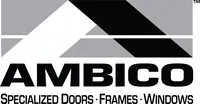
Unveiling ICC 500: 5 Key Insights About Tornado and Hurricane Shelter Standards
When we recently designed and manufactured the first-ever wood door and steel frame to meet the ICC 500 standard, we had to put our product through rigorous testing to ensure it could pass the ICC 500 test criteria. But what exactly is ICC 500 and what does it take to meet its extensive criteria? Here are five essential things you should know about ICC 500.
What is ICC?
The International Code Council (ICC) is an internationally recognized leading source of model codes and standards and building safety solutions that include product evaluation, accreditation, technology, training, and certification. Together, these solutions ensure safe, affordable, and sustainable communities and buildings. The ICC has developed codes for all aspects of construction, such as the International Building Code. This is the most widely used building code in the United States. Other notable international codes developed by the ICC include:
- International Green Construction Code
- International Plumbing Code
- International Swimming Pool and Spa Code
These codes are updated regularly to ensure they offer the latest safety codes to people around the world.
What is ICC 500?
A committee consisting of members of the National Storm Shelter Association (NSSA) and the International Code Council (ICC), formed in 2003, developed and released a standard to codify the design and construction of tornado and hurricane storm shelters. In 2008, the first ICC 500 was published and has been updated in 2014, with further updates in 2020. The ICC 500 code is intended to provide the minimum requirements for the design, construction, and installation of storm shelters. This is used to protect occupants from high winds associated with hurricanes and tornadoes.
Where is ICC/NSSA Standard for the Design and Construction of Storm Shelters used?
Found in the 2009, 2012, and 2015 editions of the International Residential Code (IRC) and the International Building Code (IBC), ICC 500 dictates that a storm shelter should be built in certain buildings such as: 911 call stations, emergency operation centers, police, fire, rescue, and ambulance stations, as well as K-12 school buildings with 50 or more occupants. Storm shelters should be built in these types of buildings if they are in areas where wind speed reaches 250 mph. Most of these locations are found in the southeast and the central United States where the wind speeds and frequency of tornadoes are high.
What testing is done in accordance with ICC 500?
Storm shelters and components of storm shelters must undergo and pass impact testing and static pressure testing. Numerous factors are incorporated into the actual testing procedure such as if the shelter is used for protection against hurricanes or tornadoes, the type of component under evaluation, the wind speed the shelter was designed to withstand, and the design of the component under testing. Impact testing is conducted on all components of the shelter. The only variables being the test missile’s weight and speed changing depending on the storm shelter’s design and wind speed. Static pressure testing is required for tornado and hurricane storm shelter components to a pressure differential of 1.2 times the designed wind pressure. Cyclic pressure testing is only required for hurricane storm shelter components and is conducted using 4500 pressure cycles in the positive direction and 4500 cycles in the negative direction. Some storm shelters must be fire-rated as well.
To learn more about the rigorous testing process that our tornado wood door and steel frame assemblies underwent, watch the video below.
Are wood doors compliant with ICC 500?
Our original Tornado Resistant Steel Doors and Frames were developed to meet the ICC 500 standard and the FEMA 361 standard and have been used in commercial storm shelters throughout the United States. After years of the specialized commercial door industry only offering steel door solutions for storm shelters, AMBICO began designing a Tornado Resistant Wood Door and Steel Frame solution to offer architects an alternative to steel. Manufactured in compliance with ICC 500, our Tornado Resistant Wood Doors and Steel Frames are tested to include multipoint hardware and are available in virtually every species, cut, and grade. They can be custom stain matched or clear coat finished while the hardwood stiles are coordinated to match face veneers. Our Tornado Resistant Wood Doors and Steel frames are supplied as they are tested with hardware and at the largest and smallest sizes so anything In between is guaranteed compliant.
If you are interested in learning more about our tornado resistant steel and wood door and frame assemblies, please don’t hesitate to contact us. We would be happy to answer any questions you may have and provide you with more information.


